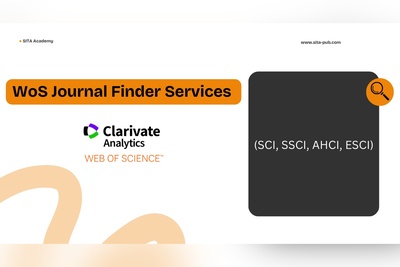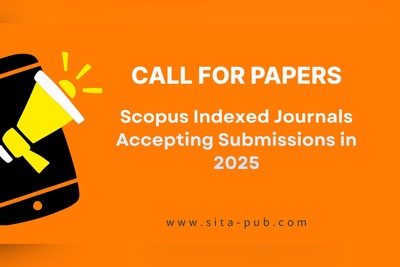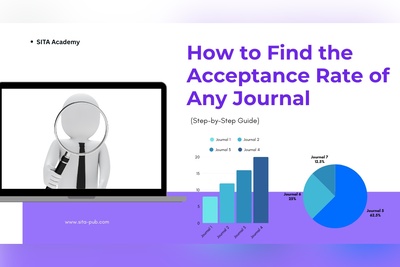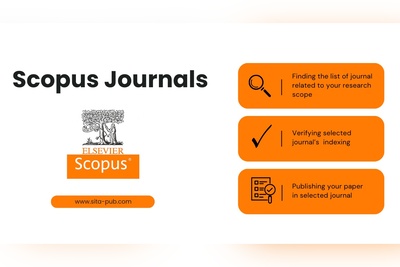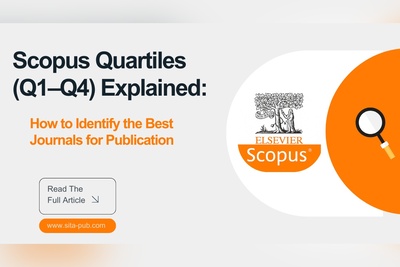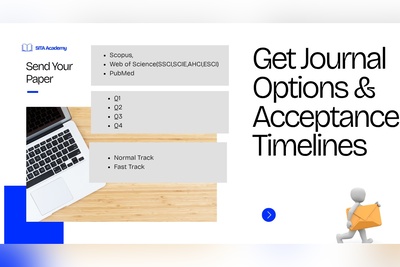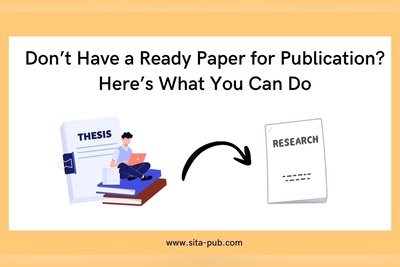Why Some Journals Are in Google Scholar But Not in Scopus or Web of Science
Learn how indexing works across platforms, how to verify a journal’s status, the differences in publication fees, and what matters for academic promotion.
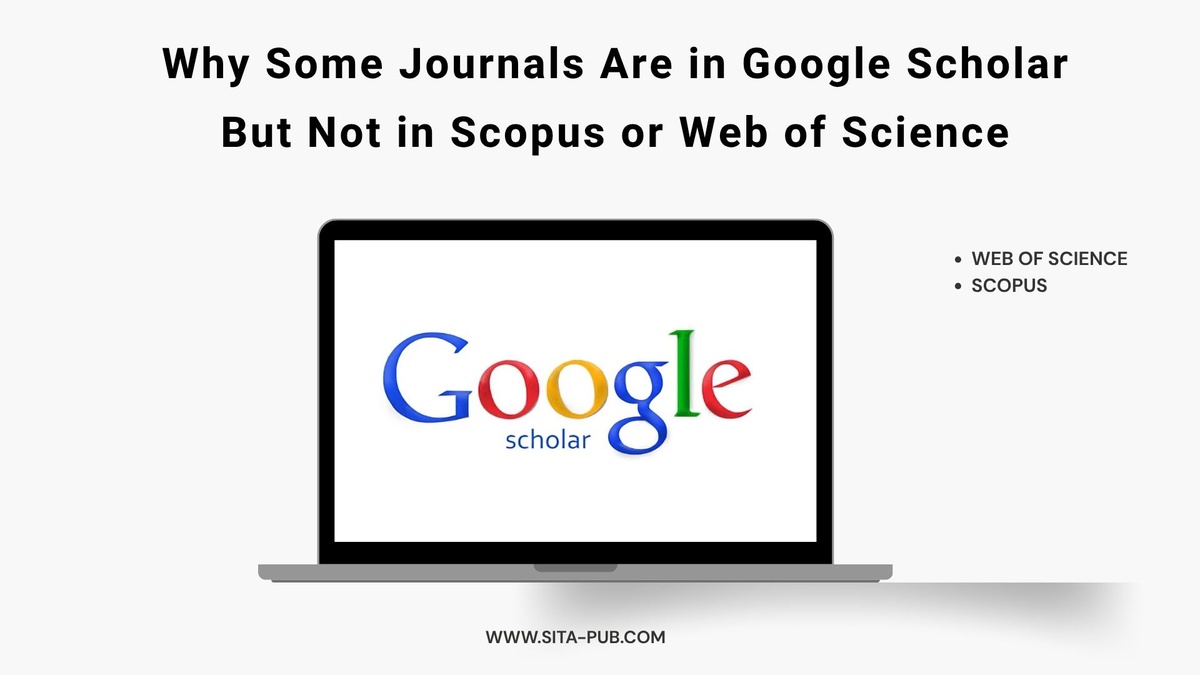
If you've ever searched for academic journals or papers online, chances are you've used Google Scholar. It’s a popular and freely accessible search engine for scholarly literature, indexing a wide range of publications including journal articles, theses, conference papers, and even book chapters. However, you may have noticed that some journals appear in Google Scholar but are not indexed in more selective databases like Scopus or Web of Science (WoS). This raises an important question for researchers: Does being in Google Scholar alone make a journal credible or suitable for publication and career progression?
In this article, we will explore what it means for a journal to be indexed in Google Scholar, how it differs from Scopus and WoS, and whether Google Scholar-indexed journals are acceptable in academic evaluations.
What Is a Google Scholar-Indexed Journal?
Google Scholar does not function as a traditional indexing service like Scopus or WoS. Instead, it is a web crawler—much like Google Search—that scans scholarly content available on institutional repositories, publisher websites, and databases. A journal is considered "indexed in Google Scholar" if its articles appear in search results and are citable via the platform.
There is no formal application process to get indexed in Google Scholar. As long as the journal:
Has full-text articles online,
Is accessible to Google’s crawlers,
Follows basic scholarly publishing standards (e.g., article metadata, author names, references),

…it may get automatically included in Google Scholar’s search database.
This openness makes it easy for a wide variety of journals—both reputable and questionable—to appear in Google Scholar.
How to Check If a Journal Is Indexed in Google Scholar
There is no official list of journals indexed in Google Scholar, unlike Scopus or WoS. However, here are ways to verify if a journal is indexed:
1. Search by Journal Name or ISSN
Go to Google Scholar and type in the journal’s title or ISSN in quotation marks. If recent articles from the journal appear in search results, it’s likely indexed.
2. Check Author Profiles
If authors have listed their articles as published in a specific journal and those articles appear in their Google Scholar profile with citation counts, this indicates the journal is included.
3. Google Scholar Metrics
Visit Google Scholar Metrics to view the top journals by h5-index in various fields. Note that this only includes journals that meet certain minimum citation and publication criteria.
What Is the Difference Between Indexing in Scopus, WoS, and Google Scholar?
1. Selection Criteria
Scopus and Web of Science have rigorous evaluation criteria, including peer review quality, editorial board composition, publishing ethics, and citation impact.
Google Scholar does not evaluate journals before indexing them. It’s more inclusive and less selective.
2. Coverage
Google Scholar indexes a broader range of documents, including preprints, theses, white papers, and non-peer-reviewed content.
Scopus and WoS focus strictly on peer-reviewed journals and conference proceedings.
3. Transparency
Scopus and WoS maintain public lists of indexed journals.
Google Scholar does not publish a master list of indexed titles.
4. Citation Metrics
Google Scholar shows total citation counts and h-index but often includes citations from non-scholarly sources.
Scopus and WoS offer standardized metrics like CiteScore, SNIP, and Impact Factor, which are used in academic evaluations.
Are Google Scholar-Indexed Journals Acceptable for Academic Publishing?
The acceptability of Google Scholar-indexed journals depends on the context and your specific goals:
When It May Be Acceptable:
For early-career researchers trying to get initial publications.
When targeting niche fields or regional journals not covered in Scopus or WoS.
If you are publishing non-traditional formats like preprints or working papers.
When It May Not Be Enough:
For academic promotion in institutions that require Scopus- or WoS-indexed journals.
For funding applications or research assessments that mandate high-impact publications.
If you need to show rigorous peer review and publication ethics, which may not be guaranteed by Google Scholar indexing alone.
In many academic systems, Scopus and Web of Science are preferred or even required for:
Faculty promotion and tenure
Doctoral defense requirements
Institutional ranking and accreditation
Grant applications and research funding
What Is the Cost of Publishing in a Google Scholar-Indexed Journal?
And How Does It Compare to Scopus and Web of Science?
Google Scholar-Indexed Journals
One of the key features of journals indexed in Google Scholar is that they can vary widely in terms of cost. Because Google Scholar is an inclusive indexing system, it covers:
Institutional journals (often free to publish in)
Regional or society-led journals
Open access journals (which may charge APCs)
Smaller, independent publishers
Typical Cost Range:
Free to $300 USD in many cases
Some open access Google Scholar-indexed journals may charge $500–$1000 USD, especially if they are run by established publishers
Notes:
Many Google Scholar journals do not charge publication fees (especially non-profit, university-hosted journals).
However, the quality and peer review standards vary significantly.
Always verify the reputation and transparency of the journal before submitting.
Scopus-Indexed Journals
Scopus journals are generally more selective, and publishing in them often comes with higher APCs (Article Processing Charges) if the journal is open access.
Typical Cost Range:
$600 to $2000 USD
Hybrid journals (subscription-based with optional open access) may charge up to $3000+ for open access
Notes:
Many Scopus journals do not require APCs if they are subscription-based.
Scopus journals usually offer greater credibility, especially for academic promotions and international recognition.
Web of Science (WoS) Journals
WoS journals, especially those indexed in the Science Citation Index (SCI) or SSCI, tend to have the highest publishing standards and often the highest APCs.
Typical Cost Range:
$1000 to $3000 USD or more for open access
Hybrid models are common, with optional open access charges
Notes:
High-impact WoS journals often offer greater academic weight, particularly for researchers in institutions with strict promotion criteria.
Like Scopus, some WoS journals are free to publish in, especially if they are not open access.
Summary Comparison
Feature | Google Scholar | Scopus | Web of Science |
Indexing Criteria | Inclusive | Moderately Selective | Highly Selective |
Typical APC Range | Free – $500 | $600 – $2000+ | $1000 – $3000+ |
Open Access Journals | Many low-cost options | Common | Common (often hybrid) |
Free Journals Available? | Yes | Yes (subscription-based) | Yes (subscription-based) |
Recognition Level | Moderate – varies | High | Very High |
Final Thoughts
If you're working with a limited budget, journals indexed only in Google Scholar can be cost-effective—but you must evaluate their editorial quality and peer review process. For career advancement, Scopus or Web of Science journals are often preferred, but they usually involve higher publication fees.
Questions to Ask Before Choosing a Journal
Before submitting your paper, consider the following questions to guide your journal selection:
Do I need the journal to be indexed in Scopus or Web of Science?
Is Google Scholar indexing enough for my institution or funder?
Is the journal peer-reviewed and reputable?
Does the journal charge APCs (article processing charges), and are they reasonable?
What is the journal’s average review time and acceptance rate?
Is the journal open access or subscription-based?
Are past issues cited often or appear credible in Google Scholar or Scopus?

Conclusion
While Google Scholar is a valuable tool for discovering research, it should not be the sole criterion for choosing a journal to publish in—especially if your career goals or institutional requirements call for indexed and peer-reviewed journals in Scopus or Web of Science. By understanding the differences and doing your due diligence, you can make a more informed and strategic publishing decision.
Journal Selection Assistance at SITA Academy
SITA Academy offers expert guidance in journal selection, backed by a professional team experienced in academic publishing. With an extensive database of journals indexed in Google Scholar, Scopus, PubMed, and Web of Science, the Academy supports researchers, graduate students, and faculty members in choosing the most suitable and credible publication venues for their work.
Process of Submitting an Order in SITA Academy

Share Your Research Scope |

Receive Journal List |

Select Your Journal |

Formatting & Submission |
